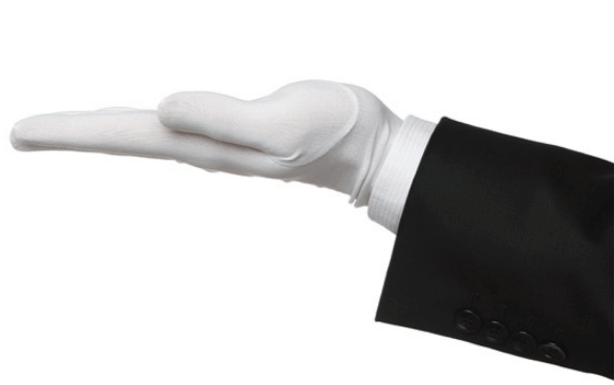
As a result, the asset is depreciated faster in the earlier years and slower in the later years, reflecting its actual usage and wear and tear. The double-declining balance depreciation (DDB) method, also known as the reducing balance method, is one of two common methods a business uses to account for the expense of a long-lived https://www.bookstime.com/ asset. Similarly, compared to the standard declining balance method, the double-declining method depreciates assets twice as quickly. The calculations accurately show how the asset’s carrying value decreases each year while the depreciation expense is based on a fixed percentage of the remaining carrying value.
Step 2: Determine the straight line depreciation rate

In the case of the semi-trailer, such uses could be delivering goods to customers or transporting goods between warehouses and the manufacturing facility or retail outlets. All of these uses contribute to the revenue those goods generate when they are sold, so it makes sense that the trailer’s value is charged a bit at a time against that revenue. In the last line of the chart, notice that 25% of $3,797 is $949, not the $797 that’s listed. However, the total depreciation allowed is equal to the initial cost minus the salvage value, which is $9,000.
Step 2 of 3
- The information provided in this blog is intended for general information only, and is not meant to constitute tax advice.
- It automates the feedback loop for improved anomaly detection and reduction of false positives over time.
- This process not only affects how businesses report their financial health but also influences cash flow, tax obligations, and investment decisions.
- The expected useful life is another area where a change would impact depreciation, the bottom line, and the balance sheet.
- A vehicle is a perfect example of an asset that loses value quickly in the first years of ownership.
- All of these uses contribute to the revenue those goods generate when they are sold, so it makes sense that the trailer’s value is charged a bit at a time against that revenue.
Depreciation is a common accounting practice used to account for the loss in value of an asset over time. It is essentially the accounting process of allocating the cost of an asset over its useful life. There are different methods of calculating depreciation, but the two most common methods are straight-line depreciation and double declining balance depreciation. In this section, we will be discussing double declining balance depreciation, its definition, how it works, and its advantages and disadvantages compared to straight-line depreciation.
When to use the DDB depreciation method
It also keeps the asset portion of the balance sheet from declining as rapidly, because the book value remains higher. Both of these can make the company appear “better” with larger earnings and a stronger balance sheet. double declining balance method Sometimes, these are combined into a single line such as “PP&E net of depreciation.” Finally, multiply the annual depreciation rate by the depreciable cost to arrive at the annual straight-line depreciation amount.

Depreciation significantly influences a company’s tax obligations, offering a strategic tool for managing tax liabilities. Different depreciation methods can lead to varying tax outcomes, making the choice of method a crucial decision for tax planning. This reduction can result in immediate tax savings, which can be particularly advantageous for businesses looking to reinvest those savings into growth opportunities or to improve cash flow.

Example of DDB Depreciation
- Straight-Line Depreciation applies a fixed rate of depreciation to the asset’s value each year, while Double Declining Balance Depreciation applies a rate that is double the Straight-Line rate.
- This depreciation method is used when assets are utilized more in the early years and when assets become obsolete quickly.
- As a hypothetical example, suppose a business purchased a $30,000 delivery truck, which was expected to last for 10 years.
- Your basic depreciation rate is the rate at which an asset depreciates using the straight line method.
- Depreciation is the reduction of an asset’s value over time due to wear and tear, obsolescence, or other factors.
- Different jurisdictions may have varying rules and incentives related to depreciation, adding another layer of complexity to tax planning.
Ask Any Financial Question
- For instance, if a car costs $30,000 and is expected to last for five years, the DDB method would allow the company to claim a larger depreciation expense in the first couple of years.
- Our solution has the ability to record transactions, which will be automatically posted into the ERP, automating 70% of your account reconciliation process.
- These tools can quickly adjust book values, generate detailed financial reports, and adapt to various depreciation methods as needed.
- For example, if an asset has a salvage value of $8000 and is valued in the books at $10,000 at the start of its last accounting year.
- The simplest method of depreciation is the straight line depreciation method, which simply deducts the cost of an asset evenly over the course of its recovery period.
- Both methods have their pros and cons, and which one a company chooses to use depends on its specific needs and goals.
The drawbacks of double declining depreciation
- One of the main advantages of the declining balance method is that it allows businesses to charge higher depreciation expenses in the earlier years of an asset’s life and lower expenses in later years.
- Depreciation is the process of allocating the cost of a tangible asset over its useful life.
- Our AI-powered Anomaly Management Software helps accounting professionals identify and rectify potential ‘Errors and Omissions’ on a daily basis so that precious resources are not wasted during month close.
- If we estimate the salvage value at $3,000, this is a total depreciable cost of $10,000.
- AI-powered accounting software can significantly streamline these depreciation calculations.
